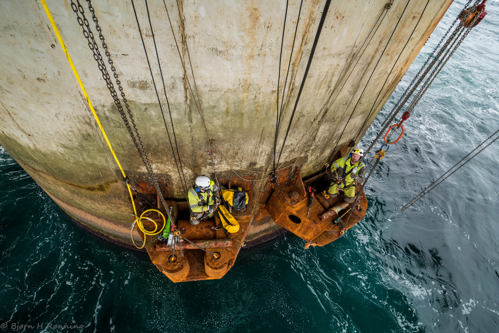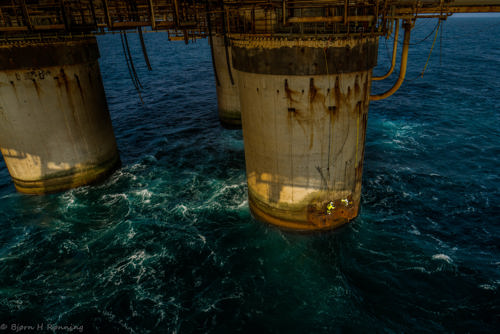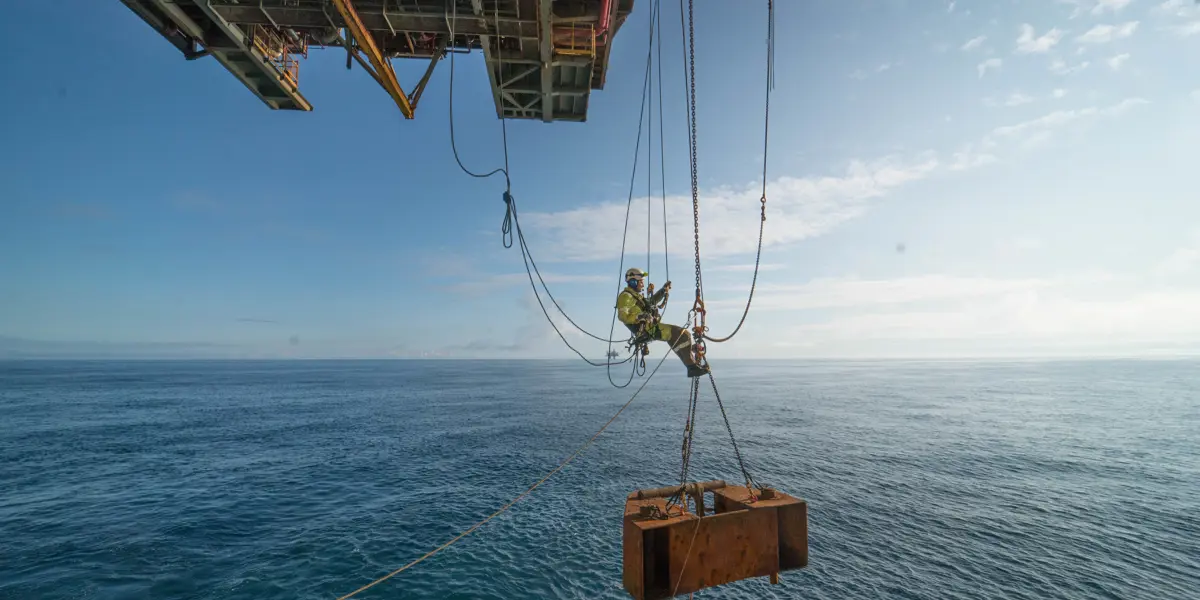The towing moorings on Statfjord A had been exposed to weather and wind since the platform came into operation in 1979. After 44 years of wear and tear from corrosion and movement, the moorings were in a condition that posed a danger that they could loosen and possibly damage installations on the seabed.
Beerenberg's access technicians were involved from the start and were given access to image material and condition reports as an important basis for the cutting task itself but also for planning, mapping and strength calculation of the lifting route. With a good foundation and early involvement of the executing TT team, we were able to uncover challenges at an early stage. Mapping the condition showed several components with severely corroded bolt connections which required careful securing of the load before we started cutting and the actual rigging operation. We save time when this is planned for even before the job starts.
Our climbers love complex rigging tasks that must be carried out using access techniques. We often manage to surprise the customer with creative solutions that both increase safety and efficiency, says department head Asbjørn Sletten Nesse.
Such rigging tasks always require access to several places along the route where the load is to be moved. Anchoring points require calculations, hoists must be installed and operated, and loads must be moved from one hoist to another. Traditionally, this has been solved with scaffolding, which can be time-consuming in challenging locations. By using access technology, we not only save time on scaffolding, we can also plan the movement of loads without adding other elements that get in the way of the rigging operation itself. This allows us to carry out the job efficiently, without adding other elements that extend the time spent on execution.
Sending our skilled climbers on rigging assignments is always a positive experience. Access technicians have their own ability to see good, safe and creative solutions for moving loads using hoists and have good experience in assessing how loads behave when they are moved between different lifting points. This creates safe and efficient execution of the work and satisfied customers, says Nesse.




